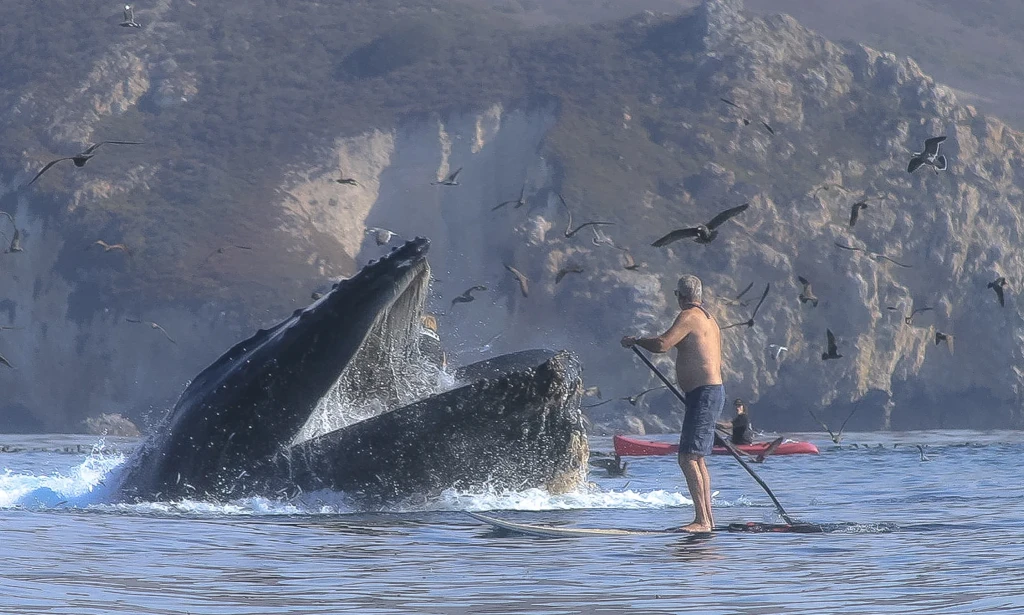Alright, so you’ve found yourself in a sticky situation—literally—inside the mouth of a whale. First off, congrats on making it this far! You’re now living (temporarily) the plot of every seafarer’s worst nightmare and Jonah's most famous bedtime story. But what happens next? Let’s dive into the surprisingly short and squishy journey you’re about to take as whale food.
Step 1: The Mouth (Or, "Welcome to Your New Humid Home")
Imagine you're swimming, minding your own business, when suddenly you’re sucked into the world's biggest vacuum cleaner. The inside of a whale's mouth is like stepping into an Olympic-sized kiddie pool—only darker, smellier, and with a décor that’s mostly tongue and baleen (or big, conical teeth if you’re in a sperm whale). You might think you’ve scored a new rent-free apartment, but trust me, this lease is short-term.
Now, if you’re in a sperm whale, those giant teeth aren’t for chewing—they’re more like nature’s chopsticks, designed to hold onto big, slippery snacks like giant squid... or, unfortunately, you. If you’re lucky, you’ll avoid being impaled, but your luck is about to run out as you head down the whale’s throat.
Step 2: The Esophagus (A Slippery Slope to Doom)
Congratulations, you’ve made it past the bouncers! You’re now sliding down the esophagus, which is basically a water slide with no return ticket. It’s slimy, it’s dark, and it smells like last week’s seafood buffet. Gravity and muscle contractions are doing all the work here, moving you along like a guest of honor on a conveyor belt.
At this point, you might be thinking, "Maybe I can get out the way I came in!" Sorry, but whales don’t have a reverse gear. It’s all downhill from here, literally.
Step 3: The Stomach (Where Things Really Start to Heat Up)
Welcome to the main event: the stomach. Or rather, the stomachs—because whales, much like cows, have multiple chambers in their digestive systems. The first stop is the forestomach, where you’ll be greeted by digestive enzymes that are very enthusiastic about their job. Think of them as the overly excited chefs of Hell's Kitchen, and you’re the featured dish.
The acid in this chamber is so strong it could take paint off a car. While you’re still probably thinking, "This is fine, I’ve seen worse," that optimism is about to dissolve faster than your skin. Oxygen’s running out, the pressure’s rising, and things are getting decidedly less comfortable. As you succumb to the lack of air and the extreme environment, you’ll start to wonder if this is worse than sitting through a five-hour meeting that could’ve been an email.
Step 4: The Stomach, Part 2 (Breakdown in Progress)
If you thought the first stomach was bad, buckle up—this one’s even worse. Here, the real breakdown begins. You’re being turned into soup, and not the kind your grandma made. Your body’s proteins, fats, and other goodies are getting deconstructed by enzymes and acid. It’s like an industrial kitchen in here, with you as the special of the day. And trust me, you’re on the menu.
At this point, your body’s pretty much unrecognizable, reduced to its most basic components. The whale's digestive system is working overtime, making sure it extracts every bit of energy you’ve got left.
Step 5: The Intestines (The Last Leg of Your Journey)
You’ve made it to the final leg of your journey—though "leg" might be a stretch since yours are pretty much liquid by now. The whale’s intestines are where any remaining nutrients get absorbed. If you had any vitamins or minerals left, they’re being put to good use. And by "good use," I mean you’re now fueling a 40-ton whale’s next big dive.
The last bits of you that couldn’t be digested—like, say, your favorite jeans or that stainless steel watch—get compacted into waste and sent packing. And yes, you guessed it, you’re headed for the whale's backdoor exit.
Step 6: The Exit (Time to Say Goodbye)
As your remnants are expelled into the ocean, you can finally say you’ve completed the full whale digestive experience. It’s not exactly a ride at Disneyland, but it’s definitely a once-in-a-lifetime trip (and by "once-in-a-lifetime," I mean, well, you get it). So, while you might not make it to the history books, you can rest easy knowing you’ve become a part of nature’s great cycle—or at least a whale’s.
In the end, getting swallowed by a whale is one wild ride you’d probably want to avoid, but hey, at least you’d have an unforgettable story to tell... if you could, you know, tell it.

You must be logged in to post a comment.